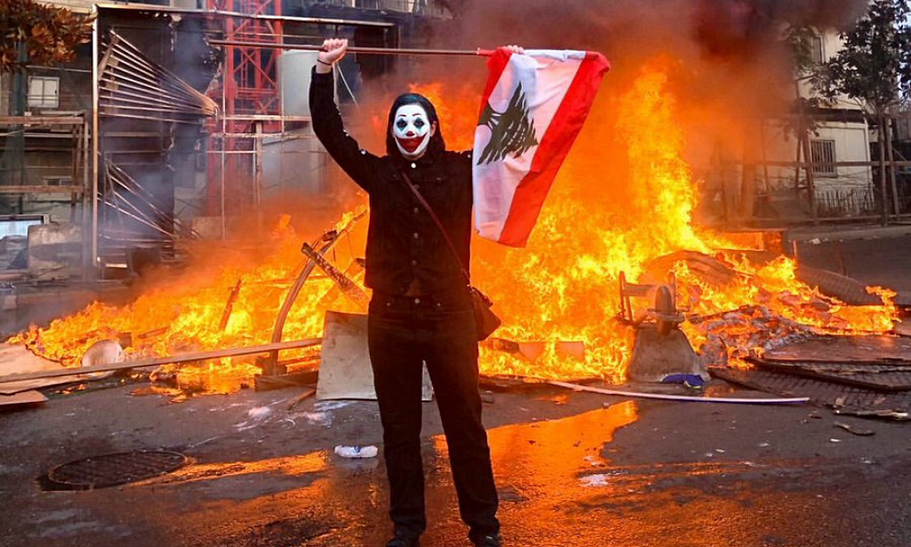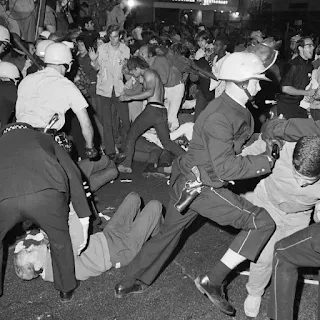CHASING NATURE
Floods and Smoke
The world we now share with children in Florida and Texas
Bryan Pfeiffer
THE first of three floods laid waste to my city. From my canoe on Montpelier’s downtown streets, I could see that nearly every business, our fire station, our library, and city hall offices were wrecked. The Great (Terrible) Vermont Flood of 2023 happened that year on July 10.
Next came the flood of 2024. Although Montpelier escaped with relatively minor damage, floodwaters elsewhere across Vermont destroyed roads, bridges, and homes, and killed at least two people. The flood that year also happened on July 10.
And then came the flooding of 2025. It flipped cars, tore apart highways, uprooted homes, and turned mud into a menace across the northeastern corner of my state. That one happened a week ago, on July 10.
In the wake of that first flood, I published an essay titled “Our New High-Water Mark.” Little did I know at the time that the new normal would become so normal—not only here in Vermont, where we once had the illusion that our state was relatively immune to global warming, but in too many other places as well, most recently in New York and most tragically in Texas.
Soon after that initial flood, as Vermonters were still grieving, still mucking out basements, still uncertain about the future, I received a hand-written letter from a 13-year-old girl living in Tarpon Springs, Florida. (Because we haven’t yet communicated about this essay, I’ll give her the pseudonym Amelia.) She’d been reading my essays on nature and admiring my photography in between her volleyball camp and other summertime activities.
“I just wanted to tell you how much I appreciate the hard work and time you put into nature and photography,” she wrote (most likely before the flood had hit my city that year). “It has really fueled me to continue loving science and everything living. Thank you so much.”
Amelia included with her letter a sketch she’d made of a Hermit Thrush, the Vermont state bird. (“I hope the pencil doesn’t smear when I fold it!” she wrote. “It’s not the best, but I tried my best.”)
At which point I set Amelia's letter and sketch on my desk ... and wept. As a human, as a writer, as a seeker of hope, I needed absolutely nothing more from the world that day. In my reply, which no doubt failed to convey the depth of my gratitude, I thanked Amelia for her drawing and kind words, and I welcomed and encouraged her love for science and nature. (She’s particularly fond of ducks.)
But it turned out that Amelia and I would have more in common than our bond with the natural world. Soon after our exchange of letters, Hurricane Idalia made landfall along the Big Bend area of Florida. Fueled and intensified by record-high sea-surface temperatures in the Gulf of Mexico that year, Idalia’s storm surge flooded Amelia’s community of Tarpon Springs.
Watching news accounts of the city’s streets as rivers, of people stranded, of vehicles submerged, I re-experienced some of the trauma of my own city’s flooding only a few weeks earlier. I wondered about the fate of Amelia’s home, about her sketches, about how water can be so hospitable to the ducks we both admire and yet so devastating to our communities—whether we live at sea level or in a mountainous state.
Vermont and Florida have little in common by way of terrain, culture, and politics. The same goes for Vermont and Texas, where the terrible flood of July 4 took the lives of at least 27 girls playing, singing, praying, and enjoying nature at a summer camp along the Guadalupe River, a tragedy of unfathomable pain and heartbreak.
Unlike most voting Texans, we’re no fans of President Trump here in Vermont—not even our Republican governor voted for him. Still, no matter where we live, no matter our politics, all of us draw our breaths from the same atmosphere—now warmer, now carrying more moisture, and now posing greater risks of deadly storms and floods.
As I write from home in Vermont, the air I breathe also carries soot from wild fires burning across central Canada and often fueled by the warming climate. It’s not unlike the polluted air inhaled by Texans living downwind of fossil fuel processing plants along the Gulf coast.
We’re burning our way toward pain and loss. I can practically set my calendar to it: July 10. If only we had a president who didn’t deny the cause. He may be clueless or corrupt or indifferent or greedy or all of the above in his denial—I have no idea. But it’s hard to ignore a house carried away in floodwaters, a community burned out of existence, or the new waves of heat causing suffering and death around the world.
Those of us not in denial seek our ways forward. For me, it's living smaller, ever closer to nature, writing for you here, and finding my inspiration and guidance from scientists, activists, and other writers who help me find my footing on a planet heated and transformed.
It’s a planet we’re leaving to Amelia and to countless other children who should be outside playing and enjoying nature this summer without the threats of floods and fires. There will always be tragedy, not the least of which is war—always a crime against children. If only the perils didn’t come as well from something as essential to our lives as air and water.
If you haven’t yet been inspired or in a position to help out, paying subscribers keep me writing and keep Chasing Nature published for everyone. Thanks.






